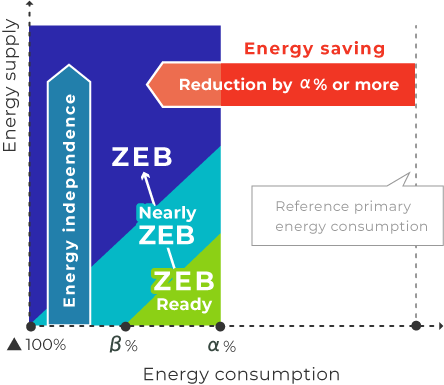About ZEB Technical SPecification
Technical Specification for ZEB
Background
Since the Paris Agreement was adopted in the 21st Session of the Conference of the Parties to the United Nations Framework Convention on Climate Change, all countries (including emerging countries) have been required to set a target for reducing their greenhouse gas emissions by 2020 and later. In all countries, reducing energy consumption is the most effective means of mitigating greenhouse gas emissions.
The building sector takes a 30% share of the world’s energy consumption, and this contribution appears to be increasing[8]. Therefore, reducing the greenhouse gas emissions from this sector is an important global issue. Ultimately, the energy consumption of the building must be reduced and balanced by renewable energy to create a (net) ZEB. Such advanced cases have already been constructed.
Although the ultimate goal of achieving ZEBs is clearly understood, its realization has been limited by practical barriers such as high initial investment. However, as the life cycle of buildings is long, the design and construction of more energy-efficient buildings is considered as a present attempt rather than a future one for greenhouse gas reduction. Hence, accelerating the movement toward ZEBs is an immediate urgency.
From this perspective, this document advocates a step-by-step realization approach for (net) ZEBs. Its aim is to accelerate the ZEB movement and describe the practical realization of ZEBs. Namely, this document proposes a practical ZEB approach and outlines the basic considerations during the total process of ZEB realization, from design to the operation and maintenance stages.
6 step process for ZEBs
Definition of ZEB

Energy saving
- Control of loads (building layout, high insulation, insolation shielding, etc.)
- Utilization of natural energy (natural lighting, natural ventilation, etc.)
- Sophistic action of the energy efficiency of equipment system.)
Energy independence
- Introduction of renewable energy
The details of the approach toward ZEB are described in the ISO TS23764: “Methodology for achieving non-residential zero-energy buildings(ZEBs)” .
TS23764 can be purchased from ISO website.
